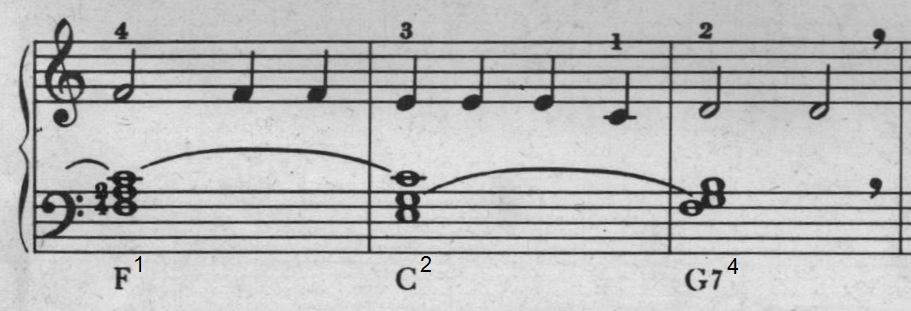

Changing the chords means that
the set of notes $F^1 = \{F,A,C\}$ is replaced by the set of notes
$C^2 = \{E,G,C\}$ is replaced by the set of notes $G7^4 = \{F,G,B\}$ .
Mind the notes in common; these are joined by bows in the score.
In MIDI, first the notes in $F^1$ are set On (Note On).
After a duration of four beats, the notes in $C^2$ should sound.
In order to accomplish smooth transition of the chords,
this should be done by first hitting the chord $C^2$ before (immediately)
releasing the chord $F^1$. More in detail, apply a Note On event to the
elements in $\{E,G,C\}$ minus $\{F,A,C\} = \{E,G\}$ immediately followed
(timestep $0$) by a Note Off event applied to the elements in $\{F,A,C\}$
minus $\{E,G,C\} = \{F,A\}$ . Note that nothing happens with the note $C$ .
After a duration of four beats again, the notes in $G7^4$ should sound.
This should be done by first hitting the chord $G7^4$ before (immediately)
releasing the chord $C^2$. More in detail, apply a Note On event to the
members of the set $G7^4 \setminus C^2$ immediately followed
by a Note Off event applied to the members of the set $C^2 \setminus G7^4$ .
This is in a nutshell how chord transition works - or rather should work
- in MIDI. It's implemented in my personal mathematical contribution to music :
MidiDoos .